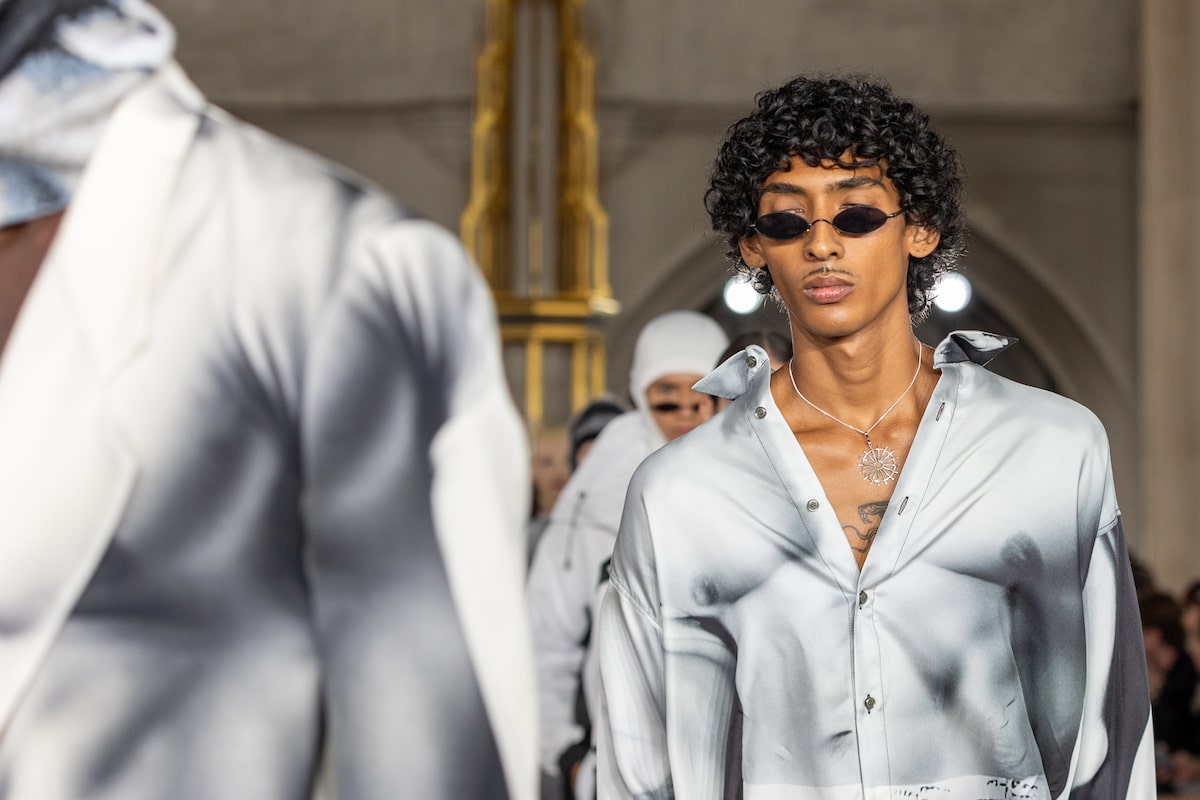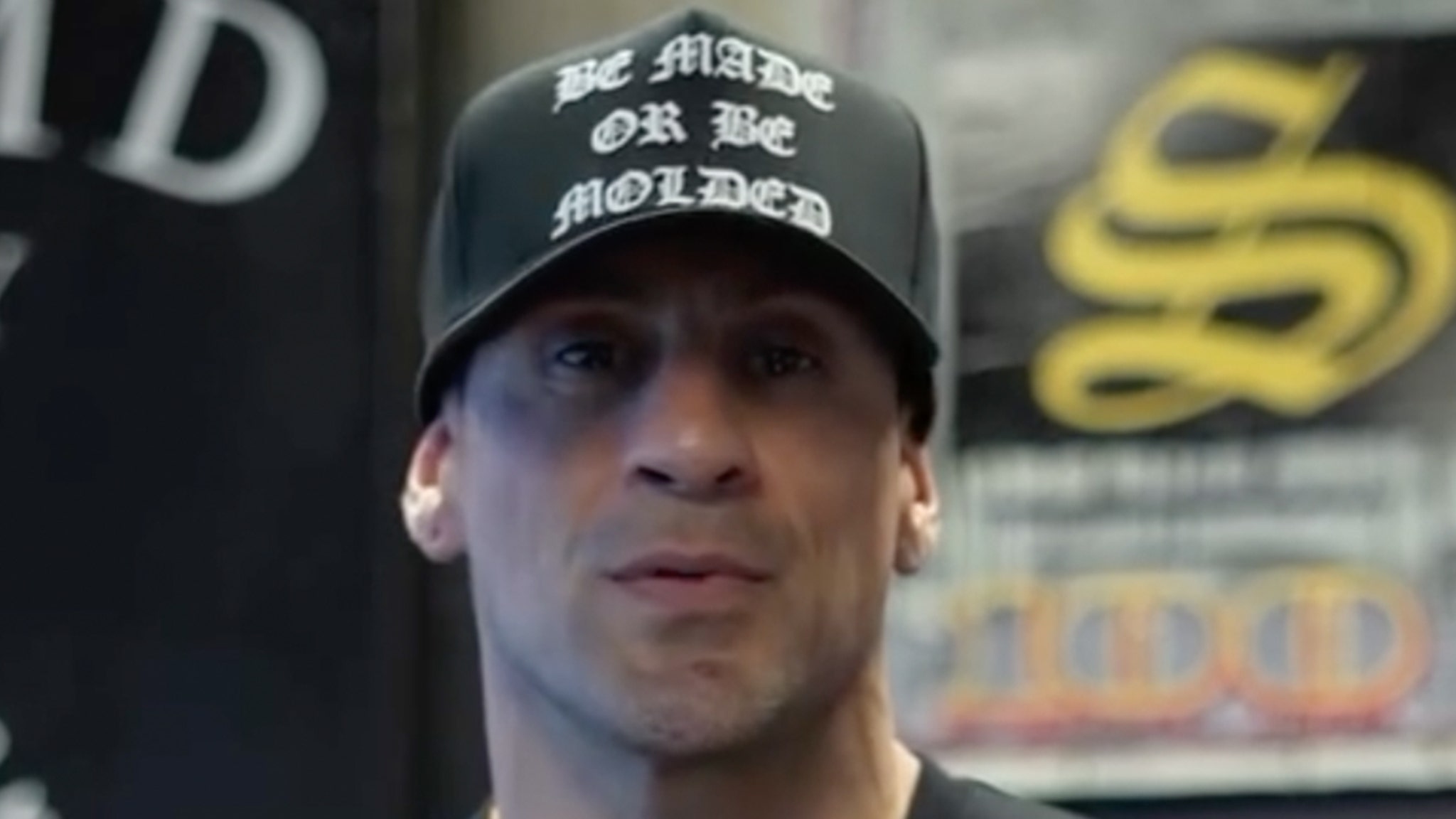Fashion
Fashion forward: How designers are using AI to push the boundaries of creativity

Designer Edward Crutchley combines rough sketches with AI technology to create his fashion pieces.Courtesy Edward Crutchley
Ten years after launching his eponymous brand at London Fashion Week, designer Edward Crutchley showcased a Fall/Winter 2024 collection this past February that was a culmination of his varied and occasionally esoteric inspirations.
Known for unifying historical silhouettes and textile considerations with contemporary influences, Crutchley’s recent assemblage was a study in sumptuous materiality and fanciful shape. And while inspirations for his pieces ranged from Byzantine Empire fabric artistry to the traditional plaited raffia technique of Borneo’s Indigenous Dayak people, Crutchley’s approach to landing on the larger details for his designs incorporated a decidedly modern method.
For the second time in consecutive fashion seasons, Crutchley used AI as part of his creative practice. “I love technology,” he says on a video call after fashion week. “People are often quite surprised by that because a lot of what I do is based on historical research. But history informs the future.”
He describes his use of AI as a kind of “mood boarding” – a design-focused process where new images are created by way of compositing ideas and references. In his initial foray into AI-informed design, Crutchley created an eye-popping black-and-white print based off a prompt of “Renaissance body builders,” which was then adhered onto fabric that was used in an array of suiting and separates.
Crutchley’s most recent adoption of the technology was even more ambitious: His rough sketches were input into the AI platform Wombo Dream, and the technology eventually populated a new image of a design after Crutchley provided more inspirational prompts. “From that AI-created image, I started putting together ideas for the collection,” Crutchley says, adding that he can manipulate the amount of sway the technology has on the visual outcome.
Designer Edward Crutchley combines rough sketches with AI tech-
nology to create his fashion pieces.Courtesy Edward Crutchley
He’s quick to note that for now, AI’s use in fashion design requires the intervention of a human to see a concept through to the final tangible outcome; to wit, he worked with craftspeople such as multidisciplinary designer Oliver Haus and crocheter Shannon-Jaide Hyland to materialize his Fall collection’s direction, which included what Crutchley describes as an AI-guided weave.
“AI has no concept of practicality or realism,” he says, nodding to the fact that the exaggerated forms found in the collection were directed by this abandonment of functionality. “It’s freed from the physical constraints that we as designers have. So, when I see an AI-generated image that comes out of my prompts, I then think, ‘How do I make this a reality?’ It becomes a case of problem-solving.”
Crutchley believes designers are inherently problem solvers anyway and adds that “the element of taste” is also necessary to make an AI-cultivated concept into something consumers would want to incorporate into their wardrobes today.
“So far, we’ve seen a lot of experimentation with generative AI that blends human and machine creativity – for example, prints and capsule collections generated with AI,” says Amanda Cosco, journalist and founder of the fashion-focused multimedia research and reporting project Electric Runway. Yet she notes that AI has been a part of the fashion industry for longer than some may realize.
“Although artificial intelligence is stealing the spotlight right now, it has been discretely working behind the scenes for years – not necessarily as a design tool but as a means for optimizing workflows and organizing data,” she says. “As consumers, we’ve probably already experienced AI while shopping if we’ve interacted with a chatbot, had a product recommended to us based on our search history, or used reverse image search to try and find out more about a specific handbag a celebrity was wearing. In fact, image search was first introduced by Google in 2001 after Jennifer Lopez wore the iconic Versace dress to the Grammys, which sent the internet into a search flurry.”
Cosco says that the impact AI will ultimately have on design has both negative and positive consequences; the negative being that its reliance on externally made reference images “raises questions about authenticity, ownership and intellectual property.”
The more encouraging facet of its use lies in its potential to democratize design – a notion amplified by the launch of AI Fashion Week in 2023 by the AI-centric design agency Maison Meta. The three winning emerging labels from the event, Paatiff, Matilde Mariano and Ope, subsequently engaged with the fashion retailer Revolve to have their collections cut with actual cloth.
“The most exciting aspect of AI for fashion design is that it’s forcing us to reconsider who gets to be a designer and the very notion of the designer as the sole author of a collection,” Cosco says.
Crutchley, who says he’s able to work on his AI designs on his phone while in bed, echoes this idea with mind paid to present-day and future fashion design students. He adds, though, that AI’s ability to facilitate creative expression shouldn’t be relegated to classrooms alone: “I would encourage everyone, not only designers, to play with AI and see what the possibilities are.”





/cdn.vox-cdn.com/uploads/chorus_asset/file/25626295/247263_iphone_16_pro_AKrales_0799.jpg)


